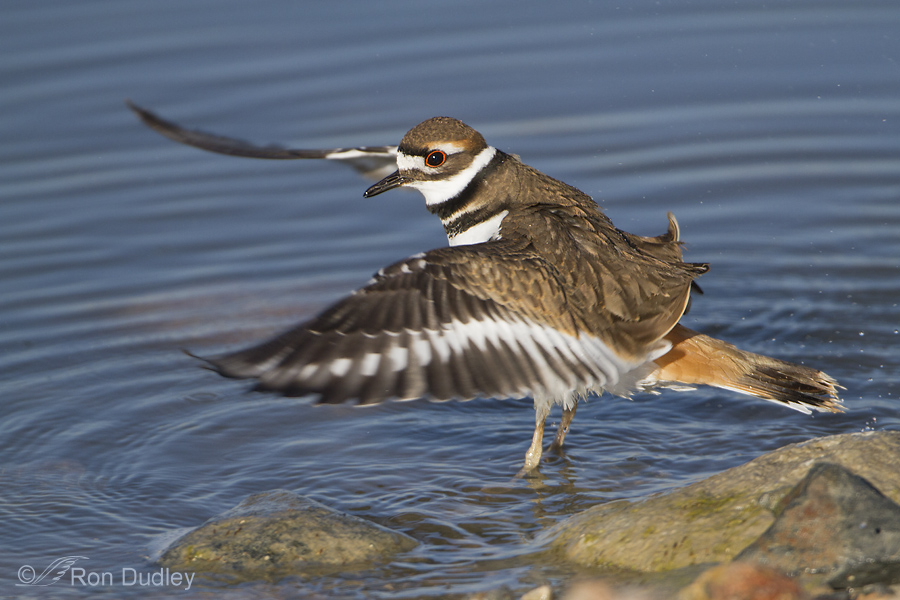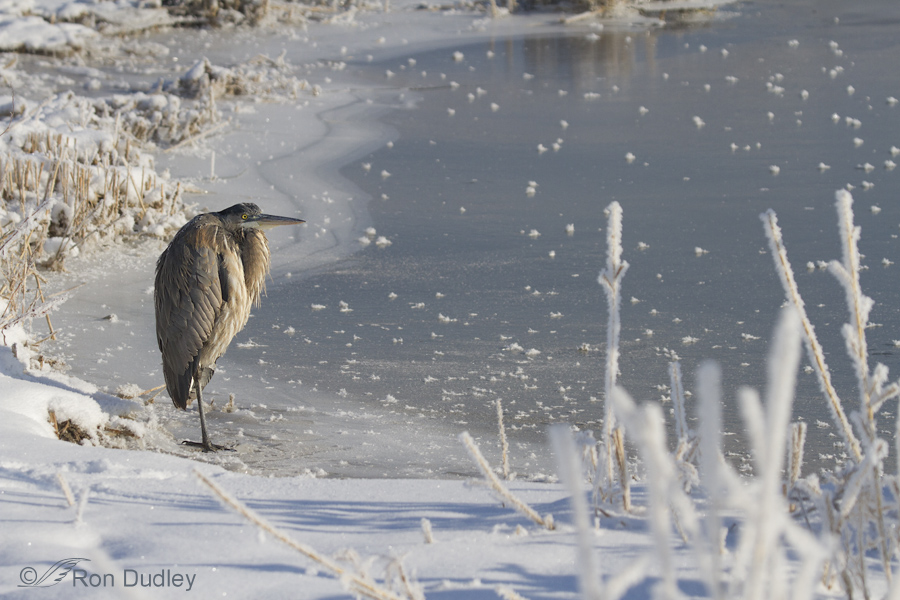Tag: ice
Great Blue Heron On Ice
It’s Been A Tough Winter For Birds (and it’s getting worse)
Typical winters are hard on birds in northern Utah (and elsewhere). But when the season is unusually frigid with lots of snow as we’re having this year they struggle even more to survive. All of these images have been taken since January 2 of this year. Upland game birds like this Chukar seem to have adapted to extreme conditions fairly well. This bird was all puffed up and sitting high on a rock to catch the earliest warming rays of the sun as it rose over the nearby Wasatch Mountains. Another upland game species that can apparently take harsh conditions quite well is the Ring-necked Pheasant (this is a female). They seem to forage for seeds at the base of plants where the snow isn’t as thick and their food is more readily available. But many other species have a difficult time and quite a few birds don’t survive until spring. The waterfowl that winter over here congregate in the few areas of open water where the flowing water is the last to freeze over. But when it gets very cold, even those small bits of open water freeze. I’ve seen ducks and coots frozen into the ice, some of them still alive. This female Green-winged Teal has just left one of the last unfrozen patches of water and is approaching an area of frost flowers. This Northern Flicker is using the protection of the underside of the eaves of a building on Antelope Island State Park. I thought the angled…
Black-crowned Night Heron On Ice
Black-crowned Night Herons are the most widespread heron in the world, breeding on all continents except Antarctica and Australia. They’re relatively common in northern Utah, although it’s somewhat unusual for me to see them around here during winter. 1/1600, f/8, ISO 500, 500 f/4, 1.4 tc, natural light So two days ago I was surprised to find this juvenile still lurking around the wetlands of the Great Salt Lake. We’re in the middle of an inversion which means it’s very cold (I was shooting in temps of -10 degrees F yesterday morning) so most still water is frozen solid. This bird was standing on ice with a thin layer of snow on top. 1/1600, f/8, ISO 500, 500 f/4, 1.4 tc, natural light Juveniles look very different from adults. Instead of the basic black, white and gray colors of the adults these young birds are brown-streaked ventrally… 1/1250, f/8, ISO 500, 500 f/4, 1.4 tc, natural light and mostly solid brown dorsally. This orange-chrome eye color will turn bright red in the adult. 1/1000, f/8, ISO 500, 500 f/4, 1.4 tc, natural light I didn’t realize it at first but this bird was in hunting mode. There’s a patch of open water just out of frame in front of the heron and the bird is watching it for fish activity. One time it made an incredibly fast move for a fish from this position but it missed. The heron didn’t stand any closer to the open water because the ice is…
Great Blue Herons On Snow and Ice
Christmas Morning at Bear River Migratory Bird Refuge was nothing short of spectacular. We had great light, wonderfully clear blue skies and lots of birds. And it was cold – as low as 6 degrees F. Perfect! On this trip (which included the Promontory Point area) we saw a plethora of raptors – Bald and Golden Eagles, Red-tailed Hawks, Rough-legged Hawks, American Kestrels, Short-eared Owls, a Prairie Falcon and one Barn Owl hunting in daylight because of the cold. And I’ve never seen as many Great Blue Herons in one relatively small area as I did on that morning. Just before I stopped to take this photo there were over 100 of them on the ice of the canal to the right and along the far bank in less than 1/3 mile – which led to a topic of conversation. Mia is from Florida and we discussed how seeing Great Blue Herons on snow and ice seems incongruous to many folks from warmer climates. That conversation was the inspiration for this post. 1/4000, f/6.3, ISO 400, 500 f/4, natural light As is typical for western herons, these birds were difficult to approach (in some areas like Florida one can almost walk up and touch them at times). This juvenile was fishing in a patch of flowing water surrounded by ice and snow. 1/2500, f/6.3, ISO 400, 500 f/4, natural light Then the same bird flew off and then came back to land within a few feet of where it had been fishing – almost like it was…
Bald Eagle Eating a Fish in Mid-air
I’ve often seen Bald Eagles carrying fish but never one actually consuming the meal while flying. Until yesterday, when I got some photos of the behavior. Thanks to Mia for calling my attention to it or I may have missed the whole thing. Eating carp in flight At first I wondered if this eagle was only killing the carp with a lethal bite as I have seen other raptors do in-flight, but then I remembered that it was already dead when it was picked up by the eagle. These fish were killed by refuge personnel (they use rotenone) in order to prevent damage to the wetlands done by these invasive fish. Falling fish scales The four photos in this sequence are in the order that they happened. Here you can see scales and debris falling from the carp as the eagles very sharp bill does its damage. Part of the head, including gill flap (operculum) being torn off I suspect that the reason this eagle chose to consume at least part of its meal in flight has to do with competition. There weren’t many fish available and lots of hungry gulls and eagles to squabble over them. If an eagle tried to eat a fish on the ice (the ponds were mostly frozen) other birds would usually challenge them for the meal. Even gulls were at times very aggressive toward the eagles. On several occasions I observed gulls biting the tails of the eagles while both were in flight. Perhaps this eagle figured it had…



